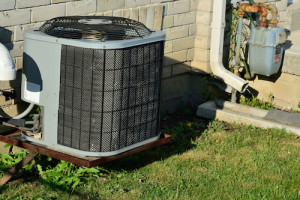What Is a Seasonal Energy Efficiency Rating?
 Air conditioners adhere to a standard of efficiency rating called the seasonal energy efficiency rating (or ratio) to determine the performance of the equipment. Governed by U.S. law, the SEER is defined as the total cooling output (in Btu) provided by the unit during its normal annual usage period divided by its total energy input (in watt-hours) during the same period.
Air conditioners adhere to a standard of efficiency rating called the seasonal energy efficiency rating (or ratio) to determine the performance of the equipment. Governed by U.S. law, the SEER is defined as the total cooling output (in Btu) provided by the unit during its normal annual usage period divided by its total energy input (in watt-hours) during the same period.
What is Seasonal Energy Efficiency Rating Based On?
Contents
This SEER rating is based on the output during the warmer months when the air conditioner is needed. Calculations for the rating are done by dividing the total output of energy by the cooling output. Essentially, the higher the seasonal energy efficiency rating, the more energy efficient the piece of equipment is. For example, a 1,500-watt air conditioner that operates for 1,000 hours during the summer would come out to an annual usage of 500,000w/h annually.
The Effect Of Temperature On The SEER Rating
The temperature outside matters in calculating this number, because it is done with an outside temperature of 95 degrees Fahrenheit and a normal inside temperature of around 80 degrees Fahrenheit. Because of newer air conditioners, this seasonal rating is typically above a 9. Older air conditioners that are not as energy efficient typically have a seasonal rating of below 9 and shouldn’t be used when trying to save money and cool down the home to it’s potential.
Laws And Regulations For a Seasonal Energy Efficiency Rating
In the 2005 within the United States, it was law that all air conditioners require a seasonal energy efficiency rating of at least 13. It’s important to note that this type of unit is typically a central air conditioning unit, as wall units typically have units that are around 10. ENERGY STAR units must comply with United States energy efficient laws and have an efficiency rating of at least 14.5 for maximum efficiency.
Now, a decade later, these rating laws have begun changing yet again. In 2015, the US Department of Energy revised the requirement changes, making southeastern states adhere to their minimum SEER. For those states, a SEER of at least 14 is required and an EER of 12.5 is required for split systems, including central air conditioners. If one thinks 14 is a great efficiency rating, there are also mini-split air conditioners that have energy efficiency ratings of up to 33 and ground-source AC units with ratings that reached as high as 75. It’s time to ditch that old unit and begin saving money, time, energy, and the environment.
Reliable HVAC Company in Toms River
Maximize your air conditioner and stay comfortable all year long with your local HVAC company, Point Bay. To ensure the efficiency and effectiveness of an air conditioning system it’s essential to properly maintain and service its various components through regular tune-ups; give us a call at732-349-5059.
